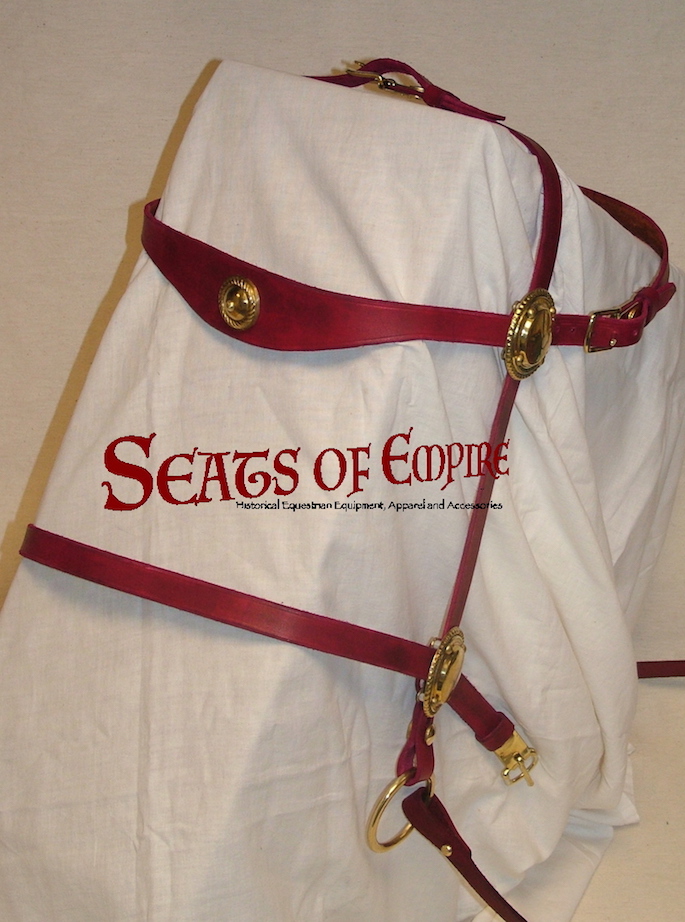Bridles
Earlier (pre-1600 CE) depictions of bridles show little or no detail of how such equipment was attached or adjusted, and the scanty archaeological evidence tends to support that idea that it was not just because the artists did not judge such detail to be relevant. The reason is quite straight forward. In pre-modern times such tack was not mass produced and bought off the peg to applied to a random horse, or swapped between mounts as today. They were generally bespoke pieces made to be a reasonable fit to a particular animal, and so did not need the degree of adjustability expected today. Another aspect is the fact that in earlier times, the bit was normally fixed to the bridle. A challenge has been to create bridles which look like those earlier styes, but nevertheless allow for some degree of adjustment as expected nowadays, and to allow owners to attach their preferred bridle themselves.
From 1600 onwards, while bespoke items continued to exist, bridle forms rapidly attained familiar modern styles.
Aside from the fixed versus adjustable distinction, because horses have not fundamentally changed shape over time, nor has what a bridle needs to do altered, some styles of bridle recur over long periods of time.
Ancient
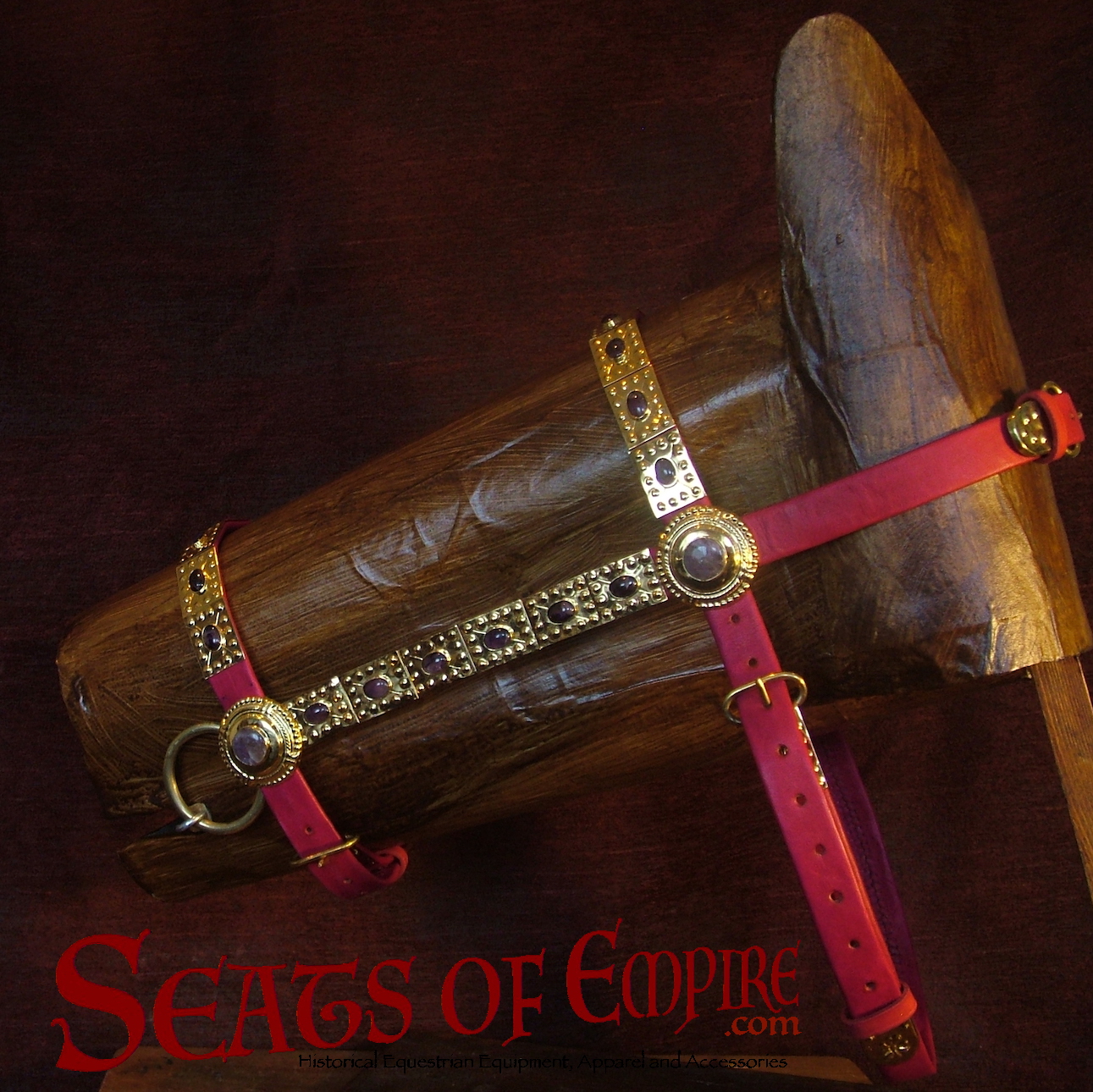
Bridle for an imperial Roman panoply based upon the Kertch plate. Gilded copper alloy discs and plaques set with amethysts.
Medieval
This form has never been completely superseded, even to today. Here is a slightly more ornate version for a thirteenth-century panoply.

A fitted bridle for a particular horse.

Some limited adjustability is concealed behind the head.
Although the form above has never been superseded, although the succeeding era shows forms that are more complex, but also simpler. Sources of the thirteenth and fourteenth centuries show one such form, most familiarly the Pierpoint Morgan Old Testament Miniatures manuscript (“Maciejowski Bible”).

A fitted bridle for a particular horse equipped with a replica hinged bit of one type used at that time.
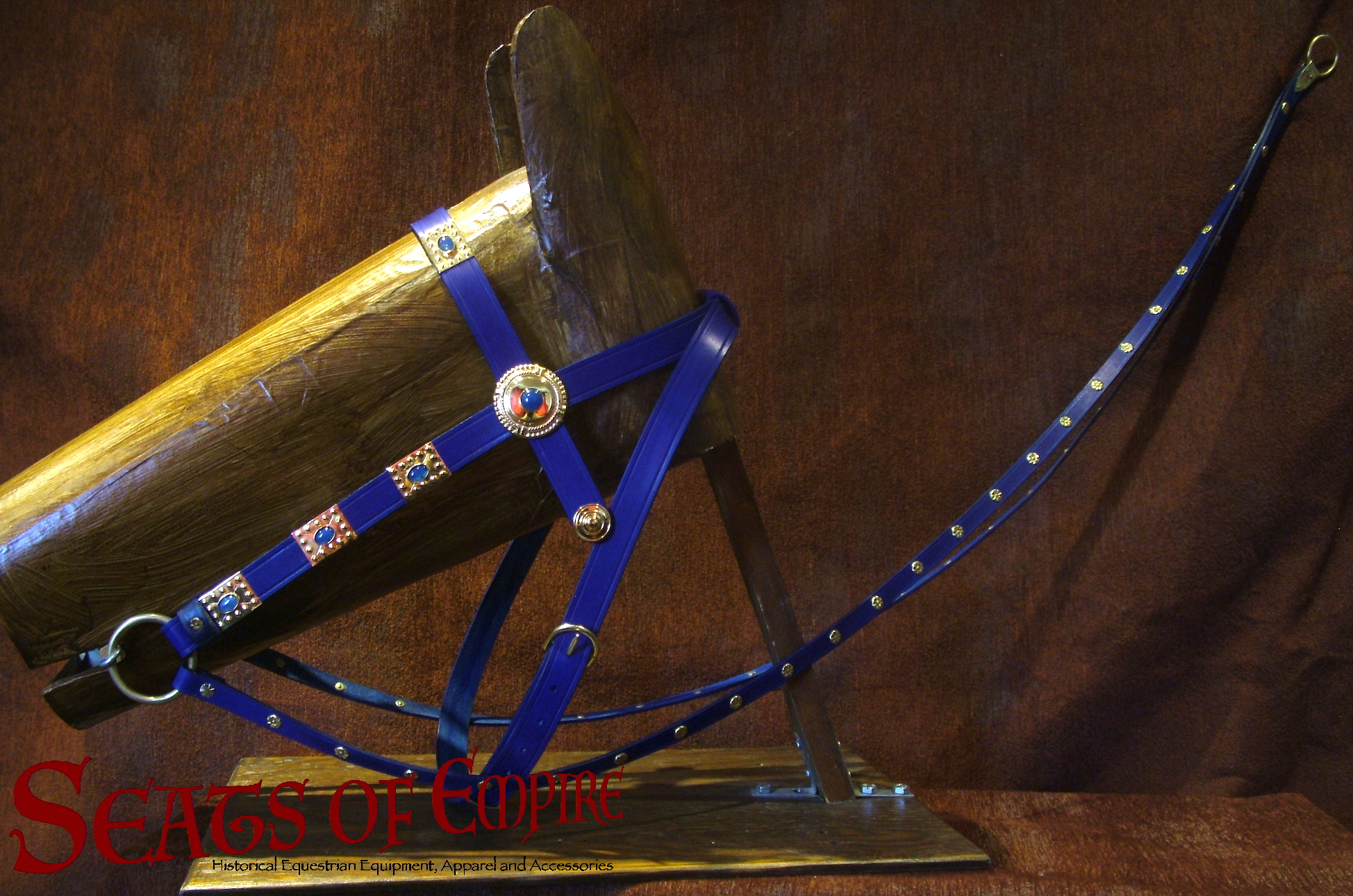
An evocation of an extremely opulent bridle of the the thirteenth–fourteenth-century form. Gilded metal fittings set with lapis lazuli.
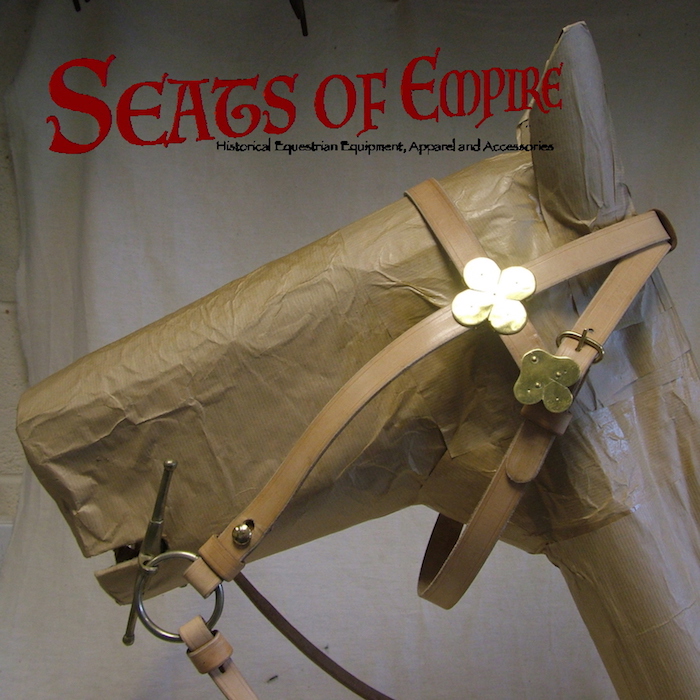
A bridle of the the thirteenth century based upon the Pierpoint Morgan Old Testament Miniatures manuscript (“Maciejowski Bible”).
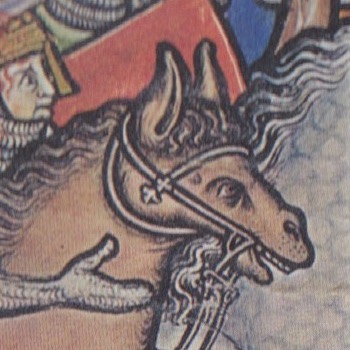
Detail of the Maciejowski Bible image showing the basis for the left/preceding bridle.
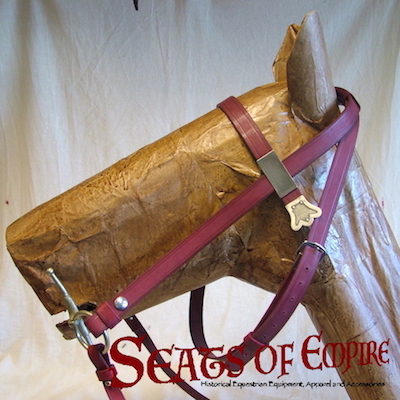
A bridle of the the thirteenth century based upon the Pierpoint Morgan Old Testament Miniatures manuscript (“Maciejowski Bible”).
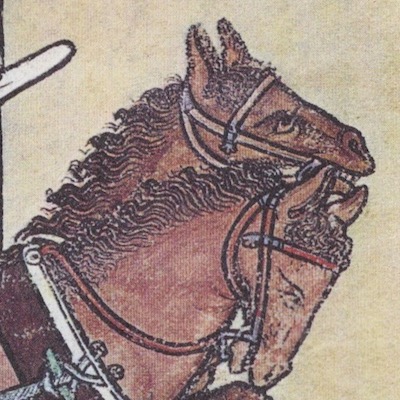
Detail of the Maciejowski Bible image showing the basis for the left/preceding bridle.
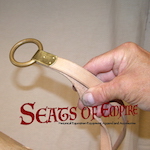
The reins shown in the thirteenthe and fourteenth-century soueces commonly show a ring at the centre whose purpose is debatable.
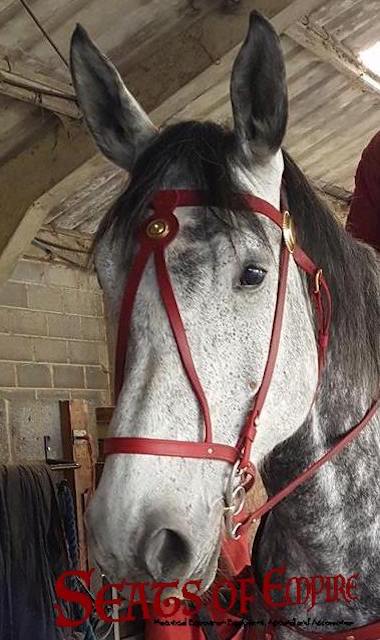
A simple custom medieval-style bridle.
Modern
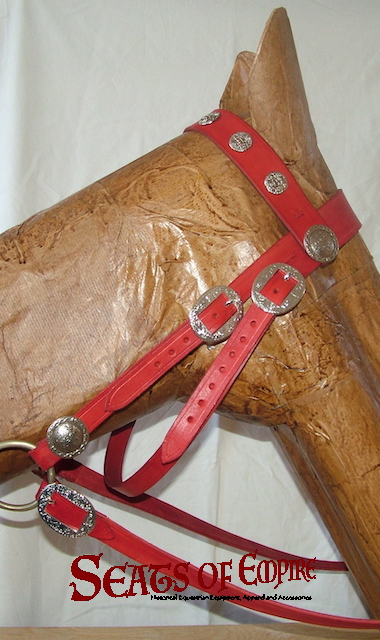
A custom parade bridle.
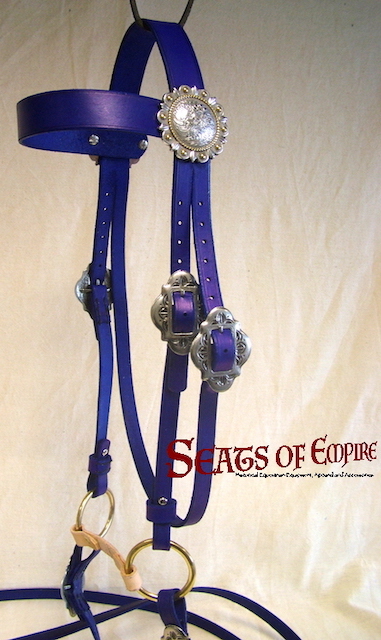
A bridle of the late seventeenth or eighteenth century style.
Copyright: Timothy George Dawson 2021, 2024


